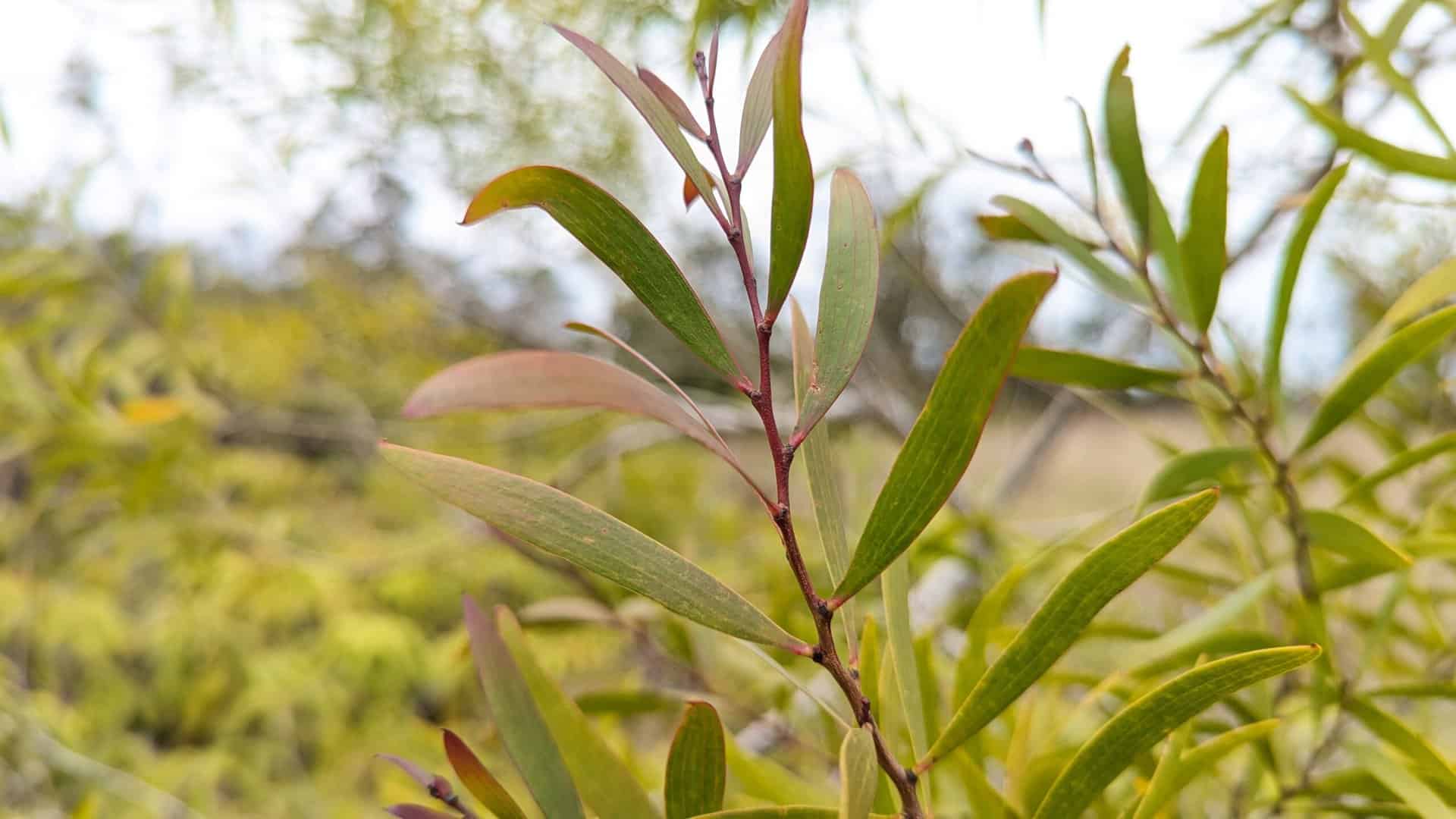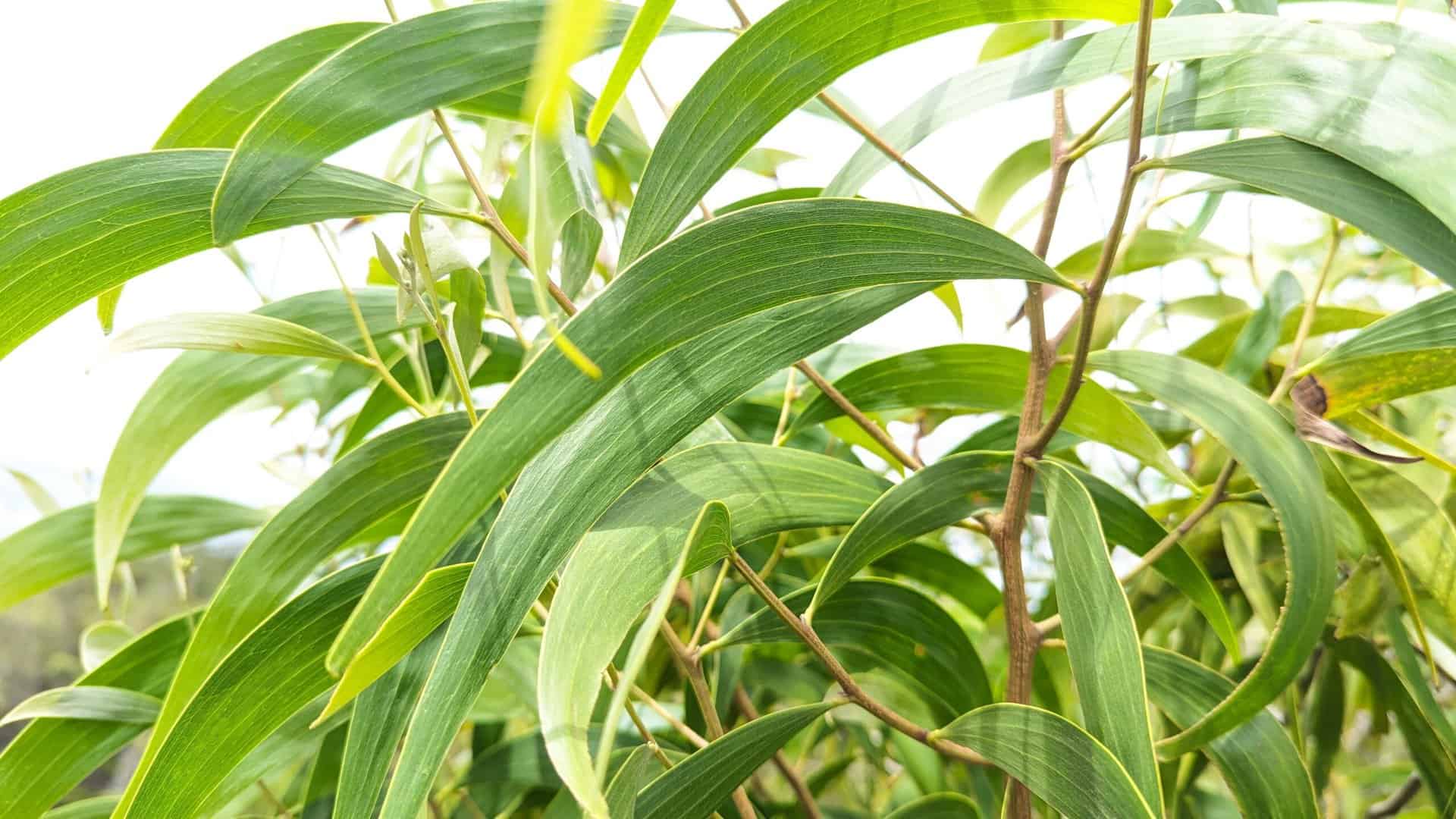E ola koa – “Live like a koa tree”
(ʻōlelo noʻeau, Hawaiian proverb and saying)
I spend a fair amount of time high in the cold wet high mountains of the Big Island. One of the axioms we know as Hawaiʻi mountain men is “Never shelter from the rain under a koa tree.”
I can tell you from experience – if you are trying to stay dry from the rain, find another type of tree!
Hiding from the rain under a koa tree is a poor idea because of the unique job koa have as a foundational species in our ecosystem. Koa are part of the aquifer cycle, support growth of the plants beneath it, and create habitat for other life around it.
The Work of Growing a Forest
Koa (Acacia koa) thrive at mountain altitudes that have abundant fog and windblown uhiwai.
Koa trees have a specially adapted stem called a phyllode (`fi- lōd) that allows them to flourish in this unique environment where much of the moisture that plants need hangs in the air.
As a sapling koa tree matures, its stems widen, flatten vertically, and become sickle shaped. Imagine a stem that is curved like a banana but thin and flat.

The tree will eventually replace all its leaves by only growing phyllodes.
The next time you see a tall koa tree, take a good look. Those curved ‘leaves’ are actually phyllode stems.
The drifting fog condenses on the koa’s wide flat stems. This condensation forms into water droplets that trickle down the curved stem, then drip down onto the ground below. Think tree shower.

This fog drip waters both the koa tree’s own roots and the plants that grow beneath its broad branches.
Koa can literally create rain from fog. Sad dry plants that used to stare thirstily at the fog passing above, can now drink happily when under a koa tree.
Now you know why it’s a bad idea to hide from the weather under a koa tree. Koa are actively working to capture moisture in the air and direct that water straight down beneath it!
Koa tree kōkua (help) areas far away as well.
The excess water not absorbed by the surrounding plants, percolates down through the soil. This rock-filtered water replenishes our underground aquifer and shows up in our lowland wells and streams.
But that’s not all koa do for our ecosystem…
A Win-Win-Win Situation
Nitrogen is the principle nutrient plants need to grow. Most plants get the nitrogen they need from the soil.
Soil contains natural microorganisms that digest the nitrogen and convert it to a form that plants can use.
The problem is new volcanic rocky soil contains very little nitrogen.
It’s difficult for plants to get established because the bacterial microorganisms have no nitrogen to consume and convert into plant food.
Koa acacia have a super power called nitrogen fixing.
Acacia koa create special microorganism sanctuaries in its roots to host nitrogen-digesting bacteria.
In addition, koa has the remarkable ability to pull nitrogen directly out of the air! A resourceful trick since our atmosphere is 78% nitrogen.
The tree carries nitrogen down to the bacteria to eat, and in turn, the bacteria convert the nitrogen to a form the tree uses to grow.
Koa can literally produce its own food out of thin air!
When phyllodes (remember, the stems that look like leaves) grow old and fall off their branches, they decompose, continually infusing new nitrogen into the soil.
Studies have shown that in many Hawaiʻi forest areas, 50 to 75 percent of the biomass created by leaf litter is thanks to the nitrogen-packed foliage of koa trees.
Koa trees are one of the keystone species of the forest because they are able to establish themselves in low-nitrogen volcanic soil where other plants cannot. Then they fertilize the surrounding soil with nitrogen-packed leaf-litter so other plants can become established as well.
How’s that for kōkua!
Habitat and Homes
Koa trees provide the necessary habitat for the surrounding plants.
Those plants, in turn, create unique living environments for vital bird, animal, and insect species.
These creatures have their own important role to play in supporting and strengthening the interlocking pieces of Hawaii’s ecosystem.
A naturally diverse and balanced ecosystem is a strong and resilient ecosystem.
Koa, the Alakaʻi (mentor)
Koa are one of the keystone species of the forest because they are a physical embodiment of aloha. They are givers.
Koa trees:
- Water the plants that cannot gather water for themselves,
- Replenish the watershed benefitting everything in the lowlands many miles away,
- Feed the plants around them so those plants in turn can kākoʻo (support) other species,
- Create an eco-interlocked habitat for animals and insects that keep the forest healthy and strong.
As kamaʻāina, we can learn much from the example of the koa.
One of the things I love about Hawaiʻi is how we are taught to kaʻana (share) what we have with those around us:
- Sometimes it’s by watering our community through teaching an important skill that you know.
- Perhaps it’s through feeding our developing keiki by sharing your time, attention, or resources.
- Or maybe creating a good habitat for our social-village by just living the aloha spirit and being a good example for those around us so they can then be that example to those around them.
Each individual knows the strengths that they have to share.
It’s not a good idea to shelter under a koa tree because they are doing their job working to grow the forest.
Learn from the example of the koa tree and water and feed your community around you.
